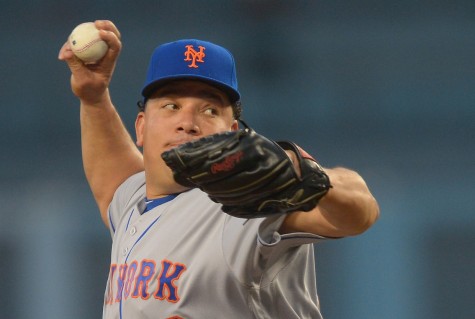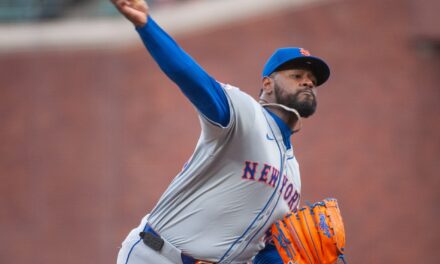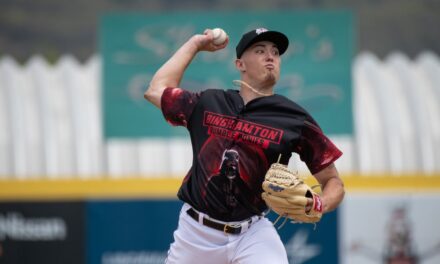
The New York Mets maintained their Major League team lead in home runs belting three more (David Wright, Yoenis Cespedes and Neil Walker) during their 7-1 victory over the Washington Nationals.
During the bottom of the first inning, the Nationals strung together three straight singles, two of which were seeing eye ground ball singles through the infield, leading to the Nationals one run. From that point on, Bartolo Colon showed pitching in its simplest form.
Bartolo Colon (W, 4-3) 7.0 IP, 1 R, 5 H, 2 SO, 2 BB
What many consider a “boring” approach or way of completing a task, usually ends up the most efficent approach or way of completing a task.
Unlike Noah Syndergaard throwing a repertoire of three electrifying pitches leading to high strikeout totals, Colon leans on his two-seam and four-seam fastball strike throwing ability to get ahead of batters and pitch to contact (hopefully weak contact).
Colon did a tremendous job getting ahead of hitters throwing 77.8% first pitch strikes, well above the league average at approximately 65%. Overall, Colon threw 71.1% strikes. But the most outrageous aspect of Colon’s approach was his fastball usage at 91%, meaning 91% of all Colon’s pitches thrown were fastballs (either two-seam or four-seam fastballs). Comparatively, starting MLB pitchers average between 60% to 70% fastball usages. Personally, I can’t remember a MLB pitcher throwing above 75% fastballs (other than Colon).
How is he the only pitcher in MLB able to succeed without throwing almost any secondary pitches?
Colon is able to do what only Mariano Rivera could do before him, use two different types of fastballs to set up each other. Rivera threw almost exclusively four-seam fastball and a cut-fastball also known as a cutter whereas Colon uses a four-seam and two-seam fastball but the same principles apply. Simply, Colon is able to create enough variance in movement, velocity and location between his four-seam and two-seam fastball while keeping similar spin with the baseball making it extremely difficult for opposing hitters to pick up and adjust to each type of fastball.
The best example was during Jayson Werth’s at-bat against Colon during the fourth inning. Colon threw an 87 mph two-seamer starting thigh high over the middle of home plate and moving sharply low and on the inside corner for a called strike one. Colon proceeded throwing an 88 mph two-seamer starting off the outside corner of home plate and moving sharply low and on the outside corner for strike two. Colon finished Werth inducing him to swing and miss on a 92 mph four-seam fastball going on a straight trajectory up and on the outside corner for strike three.
Was 91% fastballs a bit much? Probably a tad excessive. Will Colon dominate every start using this approach? No. But he will consistently produce above average results which are the most desirable results for a fifth starter in a rotation.
On a side note, Colon threw only 90 pitches in seven innings and would have gone back out for the eighth inning if not for his stiff back.
Mets Third Inning Success
Another game with three home runs is great but more impressive is the Mets stringing together five consecutive hits and a sacrifice fly during their five run third inning.
For weeks, I have bashed the Mets offense for their inability to manufacture runs which is well documented ranked highest percentage of runs scored through home runs and lowest batting average with runners in scoring position in MLB. The third inning is hope the Mets hitters are adjusting their approach with men on base to focus more on higher contact percentage rather than power.
Stat of the Night:
Today is May 24th, 2016. Happy 43rd Birthday Bartolo aka Big Sexy!
Follow Chris Zaccherio on Twitter @ziography for more Mets insight going beyond statistics.















